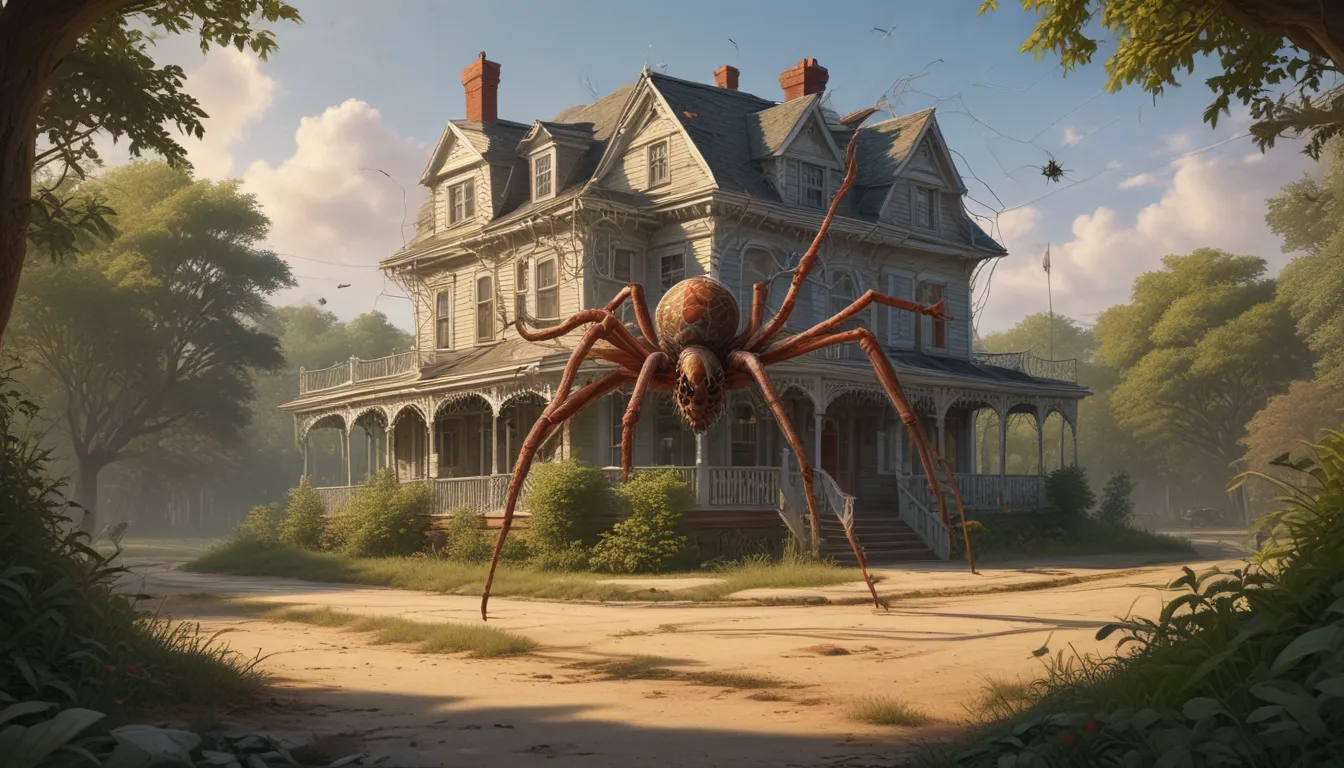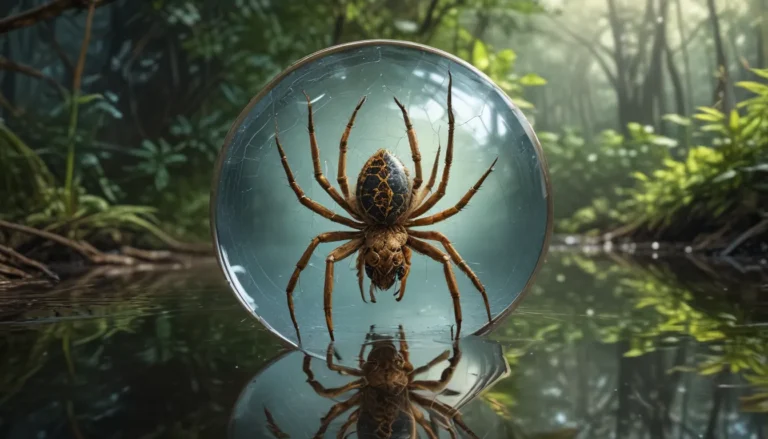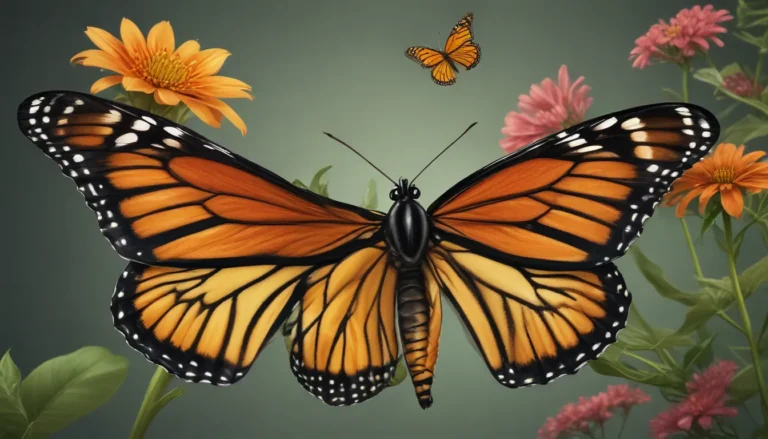The pictures we use in our articles might not show exactly what the words say. We choose these pictures to make you interested in reading more. The pictures work together with the words but don’t take their place. The words still tell you the important facts.
When it comes to spiders, the American House Spider, scientifically known as Parasteatoda tepidariorum, holds a special place as one of the most commonly encountered species in North America. Despite their petite size, these eight-legged creatures have a wide distribution range, making them a familiar sight in homes, gardens, and various structures throughout the United States and Canada.
While American House Spiders may evoke feelings of fear and disgust in some individuals, there is much more to these arachnids than meets the eye. In fact, these tiny creatures play a vital role in our ecosystem by helping control populations of other insects, making them beneficial allies in our homes.
So, if you're curious to delve deeper into the world of American House Spiders, you're in for a treat. In this article, we will uncover 15 mind-blowing facts about these spiders that are bound to change your perception of them. From their exceptional web-building skills to their unique mating rituals, there's a whole world of intriguing information waiting to be explored. So, let's embark on a journey to discover the hidden wonders of American House Spiders!
Key Takeaways:
- American house spiders are beneficial nocturnal creatures that assist in controlling insect populations.
- Their small size, strong webs, and non-aggressive nature make them valuable assets in maintaining ecological balance.
- Understanding their behavior and habitat preferences can help prevent infestations in your home.
Unraveling the Mysteries of the American House Spider
Known Habitat and Distribution
The American house spider, Parasteatoda tepidariorum, is a native species commonly found across North America. These spiders are prevalent inhabitants of residential areas, buildings, and outdoor spaces across the continent. Their adaptability allows them to thrive in various environments, making them a familiar presence in both urban and rural settings.
Exceptional Web-Building Abilities
One of the standout features of American House Spiders is their impressive skill in constructing intricate webs. These webs serve both as traps for capturing prey and as shelters for the spiders themselves. The meticulous weaving process showcases the spiders' precision and craftsmanship in creating functional structures that support their survival.
Nocturnal Behavior
American House Spiders are primarily nocturnal creatures, preferring to hide in dark corners, cracks, and crevices during the day. It is in the cover of darkness that they emerge to hunt for insects, utilizing their keen senses to locate and capture their prey. Their nocturnal habits make them elusive during daylight hours, adding to their mysterious nature.
Small Yet Mighty
In terms of size, American House Spiders are relatively small compared to other spider species. Measuring between 4 to 9 mm in body length, with females slightly larger than males, these spiders may appear diminutive but pack a powerful punch in their role as insect predators. Their small size allows them to navigate tight spaces and conceal themselves effectively.
Harmless Venom and Ecological Role
While American House Spiders possess venom for immobilizing prey, their venom is generally not harmful to humans. Instead, they use it to capture small insects like flies and mosquitoes, contributing to the natural balance of insect populations. By preying on pests, these spiders play a crucial role in maintaining a healthy ecosystem within their habitats.
Lifespan and Reproductive Behavior
The average lifespan of an American House Spider ranges from 1 to 2 years, during which they undergo multiple molting stages as they grow and mature. Female spiders have the remarkable ability to produce several egg sacs throughout their lifetime, each containing numerous eggs. The careful guarding of these sacs ensures the survival of future generations.
Sensory Adaptations for Hunting
American House Spiders possess specialized hairs on their legs that enable them to detect vibrations. This sensory adaptation allows them to sense the presence of potential prey and respond swiftly to capture their meals. By relying on these vibrations, they enhance their hunting efficiency and increase their chances of securing food.
Elaborate Courtship Rituals
Male American House Spiders engage in intricate courtship rituals to attract females for mating. These rituals involve the creation of elaborate web patterns and precise movements that showcase the males' agility and communication skills. By performing these rituals, the males demonstrate their competence as potential mates, leading to successful reproduction.
Ballooning for Dispersal
Young American House Spiders, known as spiderlings, utilize a fascinating method called ballooning for dispersal. By releasing silk threads into the air, these spiderlings catch the wind and travel to new locations to establish themselves. This dispersal mechanism enables them to explore diverse habitats and expand their population range.
Peaceful Coexistence with Humans
Despite their intimidating appearance, American House Spiders are generally not aggressive towards humans. When faced with potential threats, these spiders prefer to retreat and hide rather than engage in confrontations. Their docile nature makes them more likely to coexist peacefully with humans, especially when encountered indoors.
Versatile Habitat Adaptation
American House Spiders display remarkable adaptability to various habitats, ranging from homes and gardens to forests and urban areas. Their ability to thrive in diverse environments reflects their resilience and resourcefulness in finding suitable living spaces. This adaptability contributes to their widespread distribution and successful establishment in different locales.
Resilient Web Structures
The webs created by American House Spiders exhibit remarkable strength and durability, making them resistant to damage. These resilient structures withstand disturbances and vibrations, remaining intact even in challenging conditions. The spiders' ability to maintain their webs showcases their craftsmanship and engineering prowess in constructing functional traps.
Preventative Measures for Infestation Prevention
To minimize the likelihood of encountering American House Spiders in your home, several preventative measures can be implemented. Regular cleaning and decluttering of living spaces, sealing gaps and cracks in structures, and reducing insect populations can significantly reduce the risk of infestations. By creating an inhospitable environment for spiders, you can limit their presence and maintain a pest-free home.
Conclusion: Appreciating the Wonders of American House Spiders
In conclusion, the American House Spider emerges as a remarkable creature with a host of intriguing features and behaviors. From their web-building prowess to their vital role in insect control, these spiders contribute to the ecosystem in meaningful ways. By gaining a deeper understanding of their biology and behavior, we can foster greater appreciation for these small but essential members of our environment.
Whether you view American House Spiders with curiosity or trepidation, there's no denying the remarkable facts that surround these creatures. Their unique adaptations, reproductive strategies, and hunting techniques offer a fascinating insight into the world of arachnids. So, the next time you encounter an American House Spider, take a moment to observe and admire the skills and abilities that make them such fascinating beings.
FAQs
Q: Are American House Spiders dangerous to humans?
A: American House Spiders possess venom, but they rarely bite humans, and their venom is not considered harmful or lethal.
Q: How can I prevent American House Spiders from entering my home?
A: To reduce spider presence, maintain cleanliness, seal entry points, use protective screens on windows and doors, and minimize outdoor lighting that attracts insects.
Q: What do American House Spiders eat?
A: American House Spiders primarily feed on insects such as mosquitoes, flies, and other small bugs that become ensnared in their webs.
Q: Where do American House Spiders typically build their webs?
A: American House Spiders prefer dark, undisturbed areas like basements, attics, and corners of rooms to construct their webs.
Q: What is the average lifespan of an American House Spider?
A: American House Spiders typically live for 1 to 2 years, although some individuals may survive for several years under favorable conditions.
In your quest to unravel the mysteries of American House Spiders, you may find yourself drawn to explore other fascinating arachnid species. The Southern House Spider, a close relative of the American variety, offers a unique perspective on spider behavior and ecology. By delving into the world of the Southern House Spider, you can uncover additional wonders and marvel at the diversity of spider adaptations and lifestyles.
Acknowledging Your Contribution
At the heart of our commitment to delivering engaging and accurate content lies the valuable contributions of individuals like you. Each fact shared on our platform is a product of real user insights, enriching our repository of knowledge and information. Our dedicated editors work tirelessly to ensure the authenticity and reliability of the facts we present, guaranteeing a trustworthy and enlightening experience for our audience. Trust in our pursuit of quality and authenticity as you continue your journey of discovery and learning with us.
As you immerse yourself in the captivating world of American House Spiders, may your curiosity and appreciation for these creatures deepen. Through understanding their unique traits and role in the ecosystem, you can cultivate a greater respect for the intricate beauty and significance of these tiny arachnids. So, embark on your exploration with a sense of wonder and discovery, and let the marvels of the natural world unfold before you.






